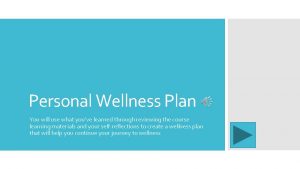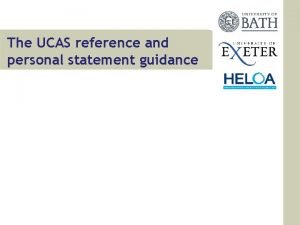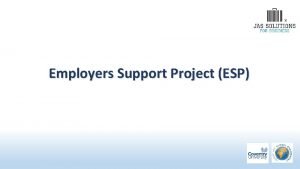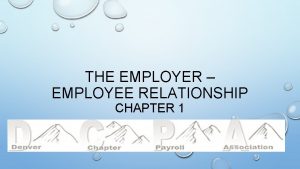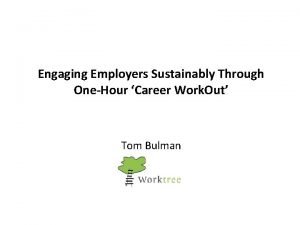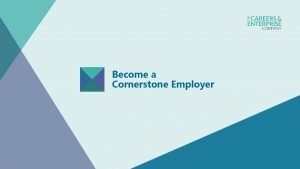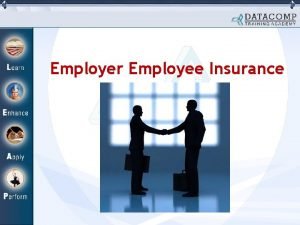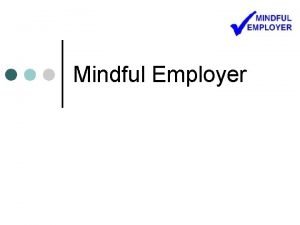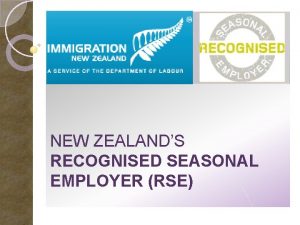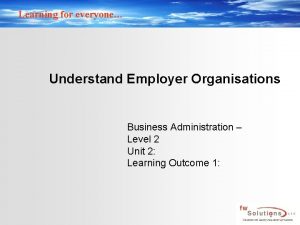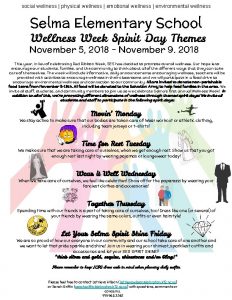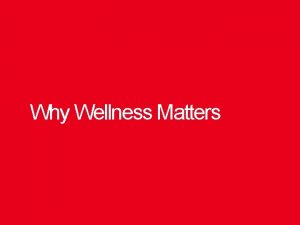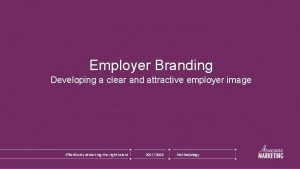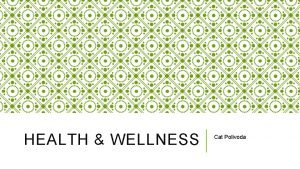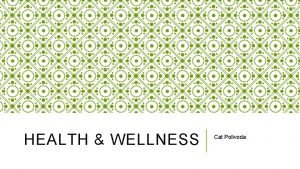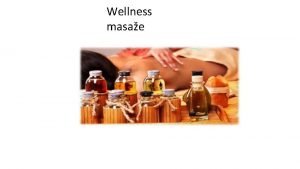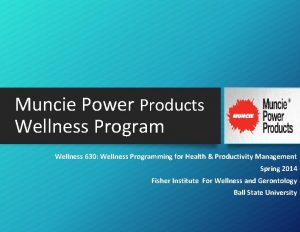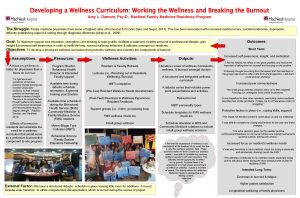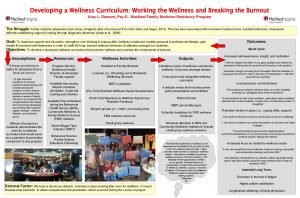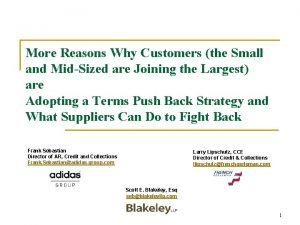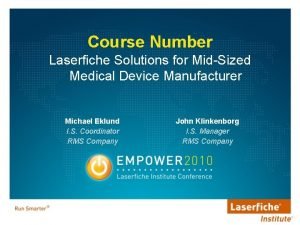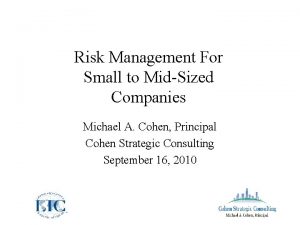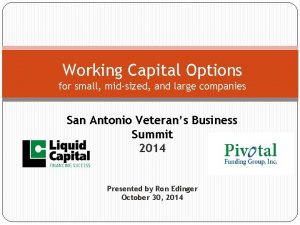Developing Wellness for the MidSized Employer A CFOs



































- Slides: 35

Developing Wellness for the Mid-Sized Employer… A CFO’s Perspective Global. Fit’s Fourth Annual Wellness Summit May 13, 2010

The ACW • • • History Mission Membership Events www. acwell. org Special thanks to Well. Now, BHS, and other ACW members for their input!

Your Speaker • Bill Lacy – President & CFO, Association for Corporate Wellness – Over 25 years CEO, CFO, and other executive positions (Fortune 500, middle market, and start-up) – EVP CFO-Finance and Admin, Business Health Services; CFO-Planet Fitness PA – President, ACW; founder Entre Advisors, LLC & Great. Life Wellness Centers, LLC – Entered corporate wellness industry 2003 – Facilitated or lead over 100 of corporate wellness speaking engagements and panels – MBA, Drexel University

Corporate Wellness • Reduce health care costs • Boost productivity • Corporate Wellness Components – – – – Reduce health care claims Absenteeism Productivity - presenteeism Worker Comp Claims / Work Site Injury / Ergonomics ST< Disability Mental Health Financial / Legal Other

Today’s Objectives 1. HCR corporate wellness highlights 2. Four corporate wellness models 3. CFOs perspective

Health Reformation Highlights • • • Ten year roll-out Wellness impacts Boost incentives New agencies / new regulations Greater need for sound Corporate Wellness strategies

Health Care Reformation • Increases incentives for employers to offer workers from 20% (current) to as much as 50% off their premiums for participating in such programs (effective 2014) • Requires chain restaurants and vending machines to disclose nutritional information • Provides additional resources for children, pregnant women and people trying to quit smoking (Lazarus, Los Angeles Times, 3/26) Source: http: //www. californiahealthline. org/articles/2010/3/26/health-reform-lawsteps-up-focus-on-prevention-wellness. aspx

Health Care Reformation • Establishes a National Prevention, Health Promotion and Public Health Council to coordinate federal efforts to promote healthy living • Eliminates copayments for Medicare and Medicaid beneficiaries receiving preventive services • Increases reimbursement rates for physicians who offer certain preventive services • Provides grants to small business for establishing wellness programs – Source: http: //www. californiahealthline. org/articles/2010/3/26/health -reform-law-steps-up-focus-on-prevention-wellness. aspx

HCR – Grant Program • $200 billion, five-year program to provide grants to certain small employers (fewer than 100 employees) for comprehensive workplace wellness programs(*) small employers that did not have a wellness program when the law was enacted Source: http: //www. shrm. org/Publications/HRNews/Pages/Wellness. Refor m. Boast. aspx

Health Care Reformation • In 2010: Employer-provided adoption assistance benefits under the IRC Section 137 are increased to $13, 170 • Source: http: //www. towerswatson. com/assets/pdf/1424/TWHC%20 Reform%20 Bulltn-Bill. Passed_3 -22 -10. pdf • In 2011: New group health plans must provide preventive care without cost sharing • In 2014: Employer government reporting begins on employee health coverage

HCR: Running Afoul of the Excise Tax? • The health reform law is likely to give a short-term boost to the use of financial incentives in wellness plans, says Corporate Synergies CEO Thom Mangan. But employers should beware of triggering the 40 percent excise tax on high value or "Cadillac" plans that takes effect in 2018, for plans valued annually at more than $10, 200 for individuals and $27, 500 for families. Employers spending on wellness programs would add to their health plan's value, pushing them closer to that trigger. • "Those who are not early adopters in using wellness initiatives to curb the cost of their health insurance will end up being hurt if they try to launch a program in 2018 or later, " Mangan notes, because "the cost curve does not come down for two to three years once you've implemented a wellness program. " • The excise tax will become a disincentive for employers to add to the cost of their health benefits and, as a result, health care reform could have a reverse effect on employers’ efforts to promote wellness and healthy behaviors, in Mangan's view. Source: http: //www. shrm. org/Publications/HRNews/Pages/Wellness. Reform. Boast. aspx

HCR: Running Afoul of the Excise Tax? • "We're strongly encouraging companies to step up their wellness efforts today to better control their future health spending, making it more likely they'll avoid the tax, " Mangan advises. • In a March 2010 letter to Congress, the Society for Human Resource Management urged lawmakers not to count the value of supplemental benefits such as wellness plans toward the excise tax threshold. Source: http: //www. shrm. org/Publications/HRNews/Pages/Wellness. Refor m. Boast. aspx

Corporate Wellness Models 1. 2. 3. 4. General Data-Driven “Safeway” Hybrid

CFO/Company’s Culture & Model Type How Analytical? Degree of Immediate Savings / ROI How Wellness Orientated How Much Budget? General Low Limited Need Low-Medium Data-Driven High Moderate Need High Safeway Moderate Immediate Need Minimal Moderate

Basic Model • Description: – Wide variety of offerings • Costs: – Per event or intervention • Results: – Difficult to track – Limited ROI

Data Driven Model • Description: – Input, Analysis of Biometric and/or Claims Experience • Costs: – High initial investment: Software, data analysis, interventions, tracking ($12 - $14 / PEPM) • Results: – Strong predictive modeling capabilities – Future ROI

Data Driven Model Changes to Policy Plan Design Vendor Contracts Claims Data HRA/ Biometrics Focus Groups Multiple Stream Analysis Plan Updates & Refinement Employee Health Programs Tracking & Outcomes Reports Administration Incentives Cultural Changes

Long Term Return on Investment (ROI) Data Driven Model 32 studies 14 studies

Data Driven Model • Strong Reporting! • Examples: 1. Medical conditions contributing to highest number of claims 2. Leading single health risk indicators 3. RX claims analysis 4. Health risk profile vs. national average 5. Unmanaged medical spend

MEDICAL CODITIONS CONTRIBUTING TO HIGHEST NUMBER OF CLAIMS LEADING CONDITIONS REPRESENTING HIGHEST % of MEDICAL CLAIMS Condition 2006 -1 2006 -2 2007 -1 2007 -2 2008 -1 2008 -2 Arthritis 14. 95% 17. 57% 24. 23% 17. 01% 16. 19% 20. 39% Asthma 10. 75% 14. 87% 14. 39% 12. 88% 9. 48% 12. 70% Back Pain 27. 16% 34. 45% 34. 88% 33. 86% 31. 60% 32. 09% Chronic Heart Failure 9. 80% 12. 58% 4. 90% 8. 85% 4. 06% 9. 98% Chronic Obstructive Pulmonary Disease 7. 40% 13. 38% 9. 22% 10. 42% 6. 10% 13. 02% Coronary Artery Disease 32. 19% 24. 23% 16. 67% 19. 12% 18. 11% 18. 27% Depression 21. 86% 23. 16% 23. 76% 29. 67% 32. 49% 24. 61% Diabetes Mellitus 27. 91% 16. 99% 12. 70% 12. 52% 10. 25% 10. 75% GERD Hypertension 16. 51% 34. 68% 15. 80% 41. 71% 16. 16% 37. 43% 18. 15% 36. 34% 22. 41% 40. 13% 19. 64% 41. 21% 8. 08% 8. 31% 9. 69% 8. 05% 8. 46% 9. 38% Lupus

LEADING SINGLE HEALTH RISK INDICATORS BASED ON 572 HRA Takers, $295. 15* population average PMPM and 2, 630* insured High Risk Factor # High Risk PMPM % High Risk HRA Takers > Average PMPM HRA Takers PA Rate County National Rate Physical Inactivity 198 $ 308. 95 34. 6% 70. 2% 71. 7% Obesity (BMI) 132 $ 361. 75 23. 1% 28. 4% NR 26. 7% Waist Circumference 147 $ 356. 79 25. 7% NR NR NR Underweight Health Perception (Poor) 7 $ 1, 123. 52 1. 2% NR NR NR 12 $ 384. 98 2. 1% 4. 2% 3. 1% 3. 8% Health Perception (Fair) 55 $ 373. 00 9. 6% 12. 1% 10. 8% 10. 6%

TOP TWENTY PRESCRIPTIONS BY EXPENSE: ON FORMULARY (2008) Description NEXIUM CAPSULES DELAYED RELEASE APOKYN FOR INJECTION NORDITROPIN CARTRIDGE INJECTION HUMATROPEN CARTRIDGE KIT LIPITOR TABLETS (Different NDC) SINGULAIR TABLETS Azithromycin COPAXONE VALTREX CAPLETS ADVAIR DISKUS INHALATION POWDER ATRIPLA TABLETS PLAVIX TABLETS ZETIA TABLETS YAZ TABLETS ASACOL TABLETS DELAYED RELEASE VALTREX CAPLETS (different NDC) LOVAZA CAPSULES HUMIRA PEN KIT NIASPAN TABLETS Primary Treatment Purpose GERD Parkinson’s Disease Growth hormone deficiency Diabetes Elevated Cholesterol Asthma Bacterial Infections Multiple Sclerosis Cold Sores Asthma HIV Myocardial Infarction, Cardiac Conditions Elevated Cholesterol Oral Contraception Colitis Cold Sores Elevated Triglycerides Arthritis Elevated Cholesterol Claimants Rx. On 102 $156, 968. 07 < 5 $124, 155. 15 < 5 $60, 017. 29 < 5 $42, 973. 63 48 $41, 668. 55 36 $41, 249. 75 63 $41, 146. 92 < 5 $36, 733. 79 < 5 $30, 385. 34 33 $30, 299. 21 36 $24, 588. 50 < 5 $23, 778. 74 18 $23, 716. 94 25 $23, 200. 32 53 $23, 176. 72 6 $22, 508. 43 37 $22, 020. 70 20 $21, 428. 07 <5 $21, 254. 98 10 $17, 342. 18 Rx. Off $0. 00 $0. 00

Health Status and Risk Factor Profile: Comparisons with National Averages

OUTCOMES: Management By Spend Levels Percentage Managed by Medical Spend Benefit Year 2006 Medical Spend Level >0 <10 K Claimants Managed % Managed GT-Medical Paid Un-Managed Medical Spend % Un-Managed Medical Spend 2470 297 12. 0% $ 3, 171, 287. 57 $ 2, 576, 919. 33 81. 3% >10 K <25 K 95 24 25. 3% $ 1, 445, 916. 49 $ 1, 039, 812. 77 71. 9% >25 K <50 K 21 7 33. 3% $ 684, 597. 01 $ 457, 464. 42 66. 8% >50 K <75 K 5 0 0. 0% $ 311, 530. 89 $ 311, 530. 89 100. 0% 12 2 16. 7% $ 2, 217, 711. 20 $ 2, 054, 033. 17 92. 6% >75 K 2007 >0 <10 K 2195 311 14. 2% $ 3, 016, 351. 03 $ 2, 339, 834. 50 77. 6% >10 K <25 K 102 25 24. 5% $ 1, 512, 136. 63 $ 1, 138, 961. 32 75. 3% >25 K <50 K 16 5 31. 3% $ 481, 874. 61 $ 329, 618. 39 68. 4% >50 K <75 K 8 5 62. 5% $ 501, 913. 89 $ 201, 238. 47 40. 1% 10 4 40. 0% $ 1, 517, 035. 51 $ 1, 062, 039. 43 70. 0% >75 K 2008 >0 <10 K 2142 342 16. 0% $ 3, 064, 841. 89 $ 2, 357, 333. 54 76. 9% >10 K <25 K 99 30 30. 3% $ 1, 504, 210. 38 $ 1, 089, 835. 87 72. 5% >25 K <50 K 22 7 31. 8% $ 743, 840. 45 $ 517, 180. 18 69. 5% >50 K <75 K >75 K 3 10 2 4 66. 7% $ 166, 780. 51 $ 53, 514. 88 40. 0% $ 1, 773, 380. 57 $ 1, 227, 000. 87 32. 1% 69. 2%

Safeway Model • Description • Results • Benefits: – Wellness Program cost neutral – Provides greater employee accountability – Immediate ROI – Works with any size firm

Safeway Model – Overview • History • Why Does It Work? – Based upon Auto Insurance Model – Good drivers pay less; Healthy employees pay less • How can my company save money…immediately? – Wellness program subsidized by unhealthy employees

Safeway Model – Overview • • Self insured Strong executive support 3 rd largest supermarket chain in N. A. Publicly traded (NYSE: SWY)…$40+ Billion in revenue…over 1, 400 stores • Total health care costs = $1 billion (about 2. 5% of revenues)

Safeway Model – Overview • 70% of Health Care Costs behavior related • 74% of Health Care Costs due to the following four diseases: – – Cardiovascular (80% preventable) Cancer (60% preventable) Diabetes (80% preventable) Obesity (90% preventable) • 78% of employees surveyed rated plan good or excellent; 76% asked for more incentives

Safeway Model – Overview • Automobile insurance model – Personal responsibility – Bad driving behaviors = higher premiums • $780 ind ($1, 560 family) insurance rebates if employee passes four measures. – Greater weighting to Smoking & Obesity and less to BP & Cholesterol • Tested every 12 months – if employee fails (or made appropriate progress employee can qualify for rebate (full year) if passes test the next time

Safeway Model – Results • Cost contained since 2005 • Total workforce = approx. 233, 000 workers – 25, 000 employees participate on a voluntary basis (75% of Safeway’s non-union workforce)…only 11% of total workforce. . . significant savings could still be realized! • Company plans to phase in its 200, 000 union workforce over next six years

Safeway Model – Challenges • (Radical) Change to company culture • Administration • Requires third party

Safeway Model – Case Study • • 781 employees Average health insurance premium = $8, 600 Average incentive = $1, 720 Year one = full incentive for participation (Biometric based HRA) • Year two and beyond = compliance with Biometric tests • 1% claims reduction year one; 5% years two and three.

Safeway Case Study - Results • Year One: – – 70% Participation $98, 460 Wellness Program ($180 / PEPY…robust) $402, 516 cost reduction $39, 872 claims reduction (1% of total claims) • Year One ROI = 4. 49 • No absenteeism, no presenteeism included

Safeway Case Study - Results • Year Two: – – 70% Participation; 20% did not pass tests $98, 460 Wellness Program ($180 / PEPY…robust) $590, 701 cost reduction $199, 361 claims reduction (5% of total claims) • Year Two ROI = 8. 02 • No absenteeism, presenteeism included

Recap Model Type How Analytical? Degree of Immediate Savings / ROI How Wellness Orientated How Much Budget? ROI (2 yrs) General Low Limited Need Low $0 - $1, 000 PEPY Undefined Data-Driven High Moderate Need High $144 - $168 3. 48 PEPY Safeway Moderate High Need Moderate $0 – Save $$ 8. 02
 Personal wellness plan
Personal wellness plan Ucas reference guide
Ucas reference guide Esp employer solutions
Esp employer solutions Employer-employee relationship
Employer-employee relationship Tony nelson's employer
Tony nelson's employer Cornerstone employer
Cornerstone employer Largest employer in singapore
Largest employer in singapore Employer pays principle
Employer pays principle Bates brand wheel
Bates brand wheel Identify job vacancy
Identify job vacancy Responsible employer
Responsible employer Employers right
Employers right Employer employee insurance
Employer employee insurance Mindful employer
Mindful employer Manpower inventory
Manpower inventory Recognized seasonal employer visa
Recognized seasonal employer visa Anton chekhov the ninny
Anton chekhov the ninny Understand employer organisations
Understand employer organisations Payroll taxes journal entry
Payroll taxes journal entry Audi employer branding
Audi employer branding Picture yourself as an employer or an employee
Picture yourself as an employer or an employee Steg för steg rita
Steg för steg rita Kontinuitetshantering i praktiken
Kontinuitetshantering i praktiken Vilken grundregel finns det för tronföljden i sverige?
Vilken grundregel finns det för tronföljden i sverige? Ministerstyre för och nackdelar
Ministerstyre för och nackdelar Sju principer för tillitsbaserad styrning
Sju principer för tillitsbaserad styrning Vem räknas som jude
Vem räknas som jude Claes martinsson
Claes martinsson Dikter om vänskap
Dikter om vänskap Nyckelkompetenser för livslångt lärande
Nyckelkompetenser för livslångt lärande Romarriket tidslinje
Romarriket tidslinje Shingelfrisyren
Shingelfrisyren Mästar lärling modellen
Mästar lärling modellen Stål för stötfångarsystem
Stål för stötfångarsystem Bamse för de yngsta
Bamse för de yngsta Verktyg för automatisering av utbetalningar
Verktyg för automatisering av utbetalningar
